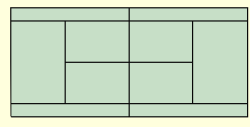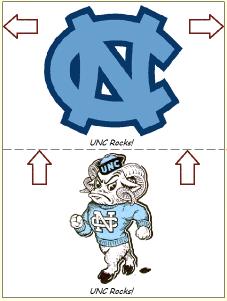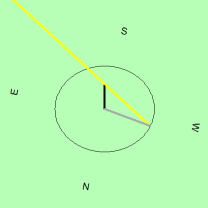What's New - March, 2009
[Home]
March 31, 2009:

The
How many rectangles?
program lets you find the answer the question yourself for the
lines on a standard tennis court, or ask the program to answer it for
you. Of course we want rectangles of all sizes, not just the
ten obvious ones.
March 28, 2009: Email for feedback and
newsletter subscription forms are working again. The
DFFNews Newsletter #52 was emailed
today. It is mostly a summary of the items posted here during the
past quarter for those who are not regular visitors but would like an
occasional chance to catch up..
March 23, 2009: The website has been slightly broken for the past few days. Specifically, the feedback and newsletter subscription pages are not able to send emails. Until it's fixed, you can use the temporary email addresses provided on those pages.
March 19, 2009:

The
Perfect Bookmark. My third best invention ever! (Even
though my wife almost fell out of her chair from laughing so hard
when I tried to explain how brilliant the idea was.) Check it out
for yourself.
March 12, 2009: This week's program was delayed a few days by birthday celebrations (70 for me and 5 for the other end of the family spectrum, grandson Nathan). I think his two best presents were "Wally", (the trash collecting robot) from his folks, and my gift of total control of the TV remote for the day. In case you do not know this, there are too many hours of Sponge Bob Square Pants on TV every day! I received enough books to last me through Christmas, and the "36 Cube" puzzle billed as the "world's most challenging". I'll let you know after I get the program simulation of the puzzle written.
RSA Public Key Exchange demo program was posted today, after a buddy ask me for the details of who does what to who when Alice and Bob exchange secure messages. I had thought I understood it when I read Sarah Flannery's book "In Code" last year, but I had to go back for a refresher. Perhaps this programming experience will help it stick better this time.
March 1, 2009:
 A viewer wanted to see where
his shadow would be if he knew where the sun was. Assuming that he
meant mathematically rather have me visit and point to it, I wrote this
Sun Shadow Simulator program to
produce a "3D" display of a vertical rod from at given sun and eye
positions. The program can also plot a set of shadow points
created when a button is clicked or loaded from a file of sun positions.
This could plot, for example, a shadow's path from sunrise to sunset on
a day or an analemma, the figure 8 figure formed by plotting the
shadow at the same time of day for a year.
A viewer wanted to see where
his shadow would be if he knew where the sun was. Assuming that he
meant mathematically rather have me visit and point to it, I wrote this
Sun Shadow Simulator program to
produce a "3D" display of a vertical rod from at given sun and eye
positions. The program can also plot a set of shadow points
created when a button is clicked or loaded from a file of sun positions.
This could plot, for example, a shadow's path from sunrise to sunset on
a day or an analemma, the figure 8 figure formed by plotting the
shadow at the same time of day for a year.
